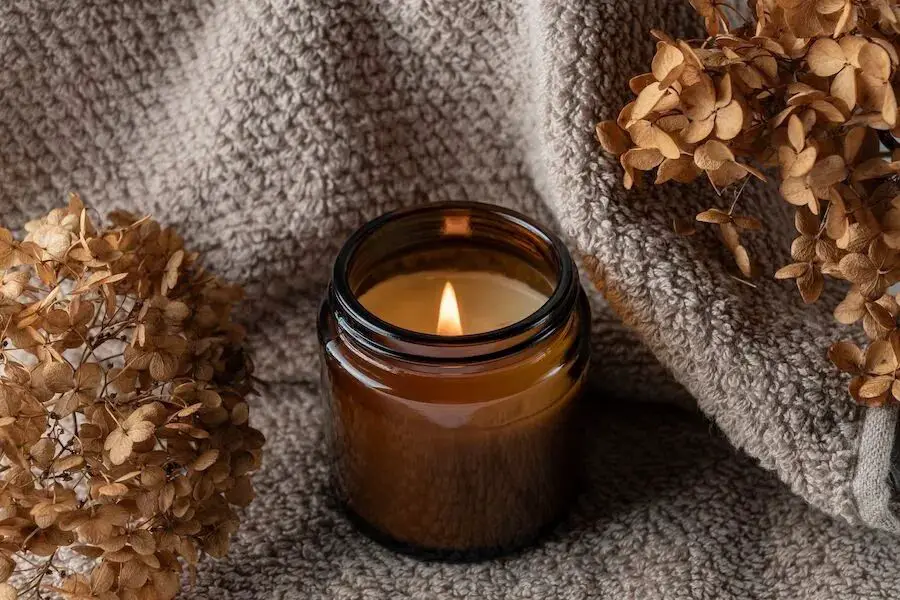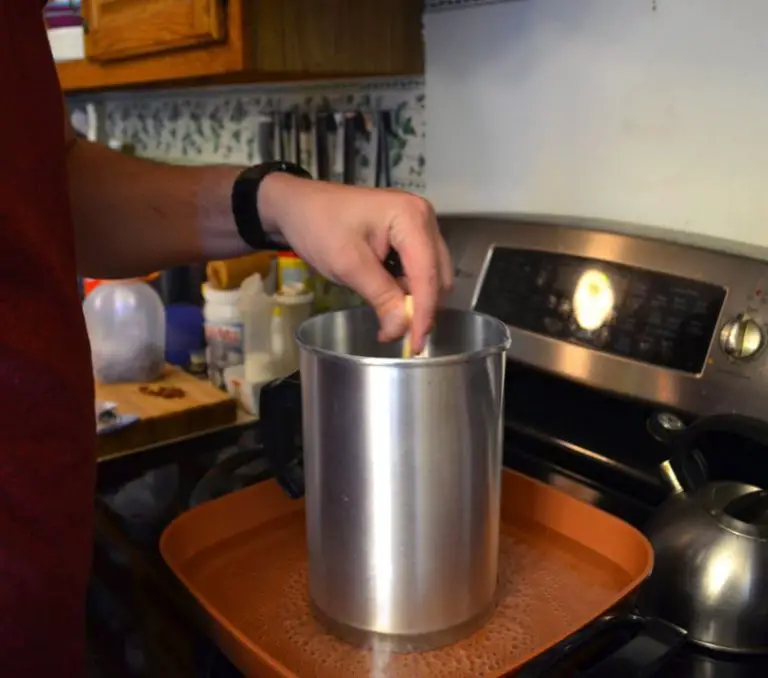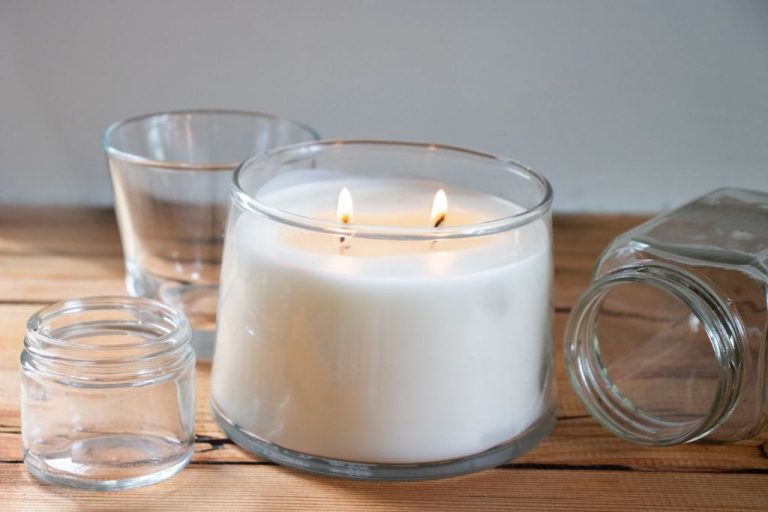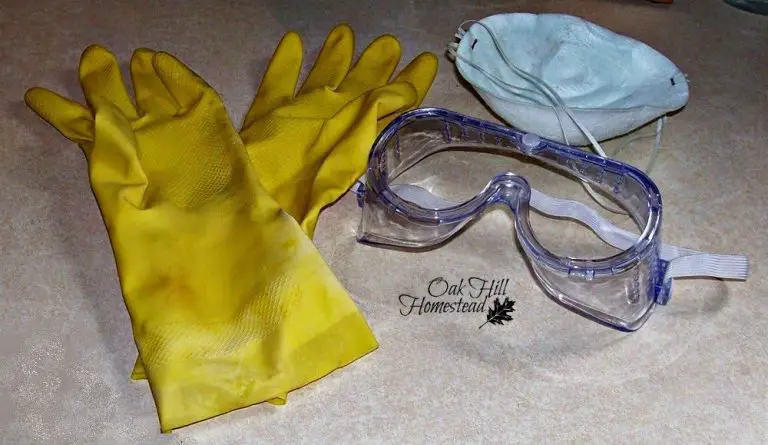Are Amber Jars Better For Candles?
Candle jars serve the important purpose of holding and protecting candles. Traditionally made of glass, candle jars allow the candle light to shine through while also preventing the wax from leaking. Amber glass is a specific type of glass that is colored amber or brown. It offers unique properties compared to regular clear glass jars.
Amber glass jars have grown in popularity for candle making in recent years. Some believe they have advantages over clear glass jars due to their ability to protect the candle fragrance and wax. But others argue clear glass works just as well. This article will compare amber jars versus other materials for candle jars to help determine if amber jars are truly better.
History of Candle Jars
Candles have been around for thousands of years, dating back to ancient Egypt and Rome where they were made from tallow, a fat rendered from animals. The first candle containers were made from stone and precious metals like gold and silver. Pottery and glass eventually became more common materials for candle jars. Glass emerged as a popular option during the Victorian era in the 1800s, providing a cheaper alternative to precious metals that allowed candles to become more widely available.[1]
The use of amber glass for candle containers rose in popularity in the 20th century. Amber glass blocks certain wavelengths of light, helping to preserve the scent and longevity of candles. The brownish-orange hue of amber glass also became aesthetically associated with candles. While clear glass jars allow light through, amber glass provides a warm ambiance. Amber glass grew as a candle jar material in the 1950s-60s. Today, amber remains a top choice for its decorative look and protective properties.[2]

Pros of Amber Jars
Amber jars tend to have an appealing, aesthetically pleasing look that is often associated with a more natural product. Many consumers prefer the warm amber color over clear glass because it has a vintage or antique appearance (Amber Glass vs Clear Glass for Candle Making). Amber glass allows consumers to easily see the candle inside the jar, checking wax color, fragrance, and overall presentation. The darker color provided by amber jars helps block certain wavelengths of light that can damage wax blends and essential oils (Top 5 Benefits of Amber Glass Jars). So while still allowing visibility of the candle itself, amber jars provide some additional protection and are perceived as a more natural, environmentally friendly choice.
Cons of Amber Jars
Although amber jars have benefits, they also come with some drawbacks compared to clear glass jars:
Amber jars tend to be more expensive than regular clear glass jars. The tinting process adds to the cost of manufacturing amber glassware (https://infinityjars.com/blogs/news/why-your-business-should-avoid-amber-glass-jars-best-alternatives). So amber jars usually retail for a higher price point.
The tinted glass also absorbs more heat. So amber jars can get hotter than clear glass when holding candles. The increased heat retention may impact the candle burning performance (https://selfmadecandle.com/blogs/candles/amber-glass-vs-clear-glass-for-candle-making).
Finally, amber glass limits the decorative options for candles. The tinted glass obscures visibility of the interior design, wax color, embeds, etc. Clear glass provides more ability to showcase attractive candle appearances.
Pros of Glass Jars
One of the main advantages of using glass jars for candles is that they tend to be more affordable than other materials like amber glass. Brands like Threshold offer inexpensive 8oz glass jars that can be purchased in bulk for candle making (Threshold 8oz Lidded Glass Jar Black Label Candle). The wider availability and lower cost of glass makes it easy for hobbyists to find jars to get started.
Glass also comes in a much wider variety of shapes, sizes, and styles compared to other materials. You can find standard cylinder shapes, as well as more ornate styles with floral cutouts or faceted edges. The diversity of glass jar styles allows candle makers to create unique looks and branding for their products.
Finally, glass candle jars generally don’t get as hot to the touch as metal tins when a candle is burning. The glass helps insulate some of the heat. This allows glass jars to be handled safely, without risk of burns, while blowing out a candle or moving it to a different location.
Cons of Glass Jars
Glass jars have some drawbacks compared to other candle jar materials. Glass is more prone to breaking if dropped or handled roughly. Glass candle jars also lack the natural, earthy look that some prefer with candles. The opacity of glass makes it harder to see how much candle remains compared to translucent materials like amber glass. According to https://nichesources.com/wholesale-candle-vessels, glass jars can also get quite hot compared to other materials, posing a potential burn risk.
Other Jar Materials
In addition to glass and amber, candles can be housed in jars made from various other materials like metal, ceramic, and more. Each material has its own unique properties that can impact the candle burning experience.
Metal: Metal tins and containers are sometimes used for candles. Tin is one popular metal option that conducts heat well. This can help the candle burn evenly. However, metal does not allow you to see the candle while it burns. Metal tins often have a rustic, vintage aesthetic.
Ceramic: High-fired ceramic jars are occasionally used for candles. Ceramic is opaque like metal so you cannot view the candle while burning. Ceramic holds heat so it keeps the wax pool hot. But it is heavy and prone to cracking. Ceramic candle holders bring an earthy, handmade feel.
Concrete: Concrete vessels are an unorthodox candle jar material. The concrete holds some heat to melt the wax evenly. Concrete looks modern and stylish but retains moisture so it must be sealed well. Concrete jars tend to be heavy.
Silicone: Silicone is rarely used for candle jars, but some collapsible silicone containers hold candles. Silicone is flexible, shatterproof, and can provide grip. But it may be prone to melting from the heat of candles.
Other materials: Other niche materials like acrylic, laminate, or even wood are sometimes fashioned into candle holders. Each material has unique properties that can enhance or detract from the candle experience.
Safety Considerations
When it comes to fire safety, both amber jars and glass jars have risks that need to be considered. Glass jars can get very hot when holding a burning candle, with temperatures potentially reaching over 200°F. Amber jars dissipate heat better than clear glass, but can still reach dangerous temperatures. Both types of jars should be on a stable, heat-resistant surface. Warning labels should be used on any candle jar, cautioning users not to touch the hot glass.
There are also concerns around the jars breaking from the heat of the flame. Glass is prone to thermal shock, meaning abrupt temperature changes can cause it to crack or shatter. Thick, tempered glass is less susceptible, but there is still a risk. Amber glass is actually more thermally resistant than clear glass and can better handle the rapid heating and cooling involved with candle use. Testing jar durability ahead of time and allowing adequate space between the candle’s flame and the jar walls is recommended for safety with any material.
Proper wick trimming helps reduce the danger of jar breakage and overheating. Keeping wicks short prevents excess soot buildup inside the jar which captures more heat. Jar candles should not be left burning for more than 4 hours at a time. Both glass and amber jars require caution, but amber may have a slight safety advantage due to its thermal properties.
Environmental Impact
The environmental impact of candle jars depends largely on the materials used. Glass, for example, is highly recyclable, meaning jars can be remelted and reformed repeatedly. Studies show recycling glass reduces air pollution by 20% compared to creating new glass from raw materials [1]. However, glass production is still energy-intensive. Extracting raw materials like silica sand can damage habitats, and manufacturing glass generates greenhouse gas emissions.
Plastic candle jars are less recyclable, especially multi-layered plastics. Most end up in landfills where they take centuries to decompose. Producing plastic also relies on fossil fuels as a raw material and releases toxins during manufacturing. However, some companies now use plant-based bioplastics for candle jars, which have a reduced environmental impact.
Sourcing sustainable raw materials is key for minimizing impact. Using post-consumer recycled glass reduces mining for virgin materials. Soy wax and beeswax avoid petroleum-based paraffin wax. Candle brands committed to eco-friendly practices like renewable energy can further reduce their footprint. In summary, glass jars tend to be better for the environment due to recyclability, but material choice alone doesn’t determine sustainability.
Conclusion
Overall, there are pros and cons to both amber jars and glass jars for candles. Amber jars often have a warmer, more inviting aesthetic and protect against UV light, which can help preserve fragrance oils. However, amber tends to be more expensive and can get very hot. Glass jars allow you to showcase candle colors, are typically inexpensive, and dissipate heat effectively. However, they offer less UV protection.
For candles with delicate fragrance oils that need protection, amber jars may be the better choice. For budget-friendly containers to showcase colorful candles, standard glass jars are ideal. Votive candles and tea lights are also often best suited to glass holders. Consider material, size, shape, cost, visual appeal, and safety based on your candle type and budget.
With some care taken in design and testing, beautiful, effective candles can be created with either amber or glass jars. Take advantage of both jar materials’ strengths for different candle varieties in your product line.






